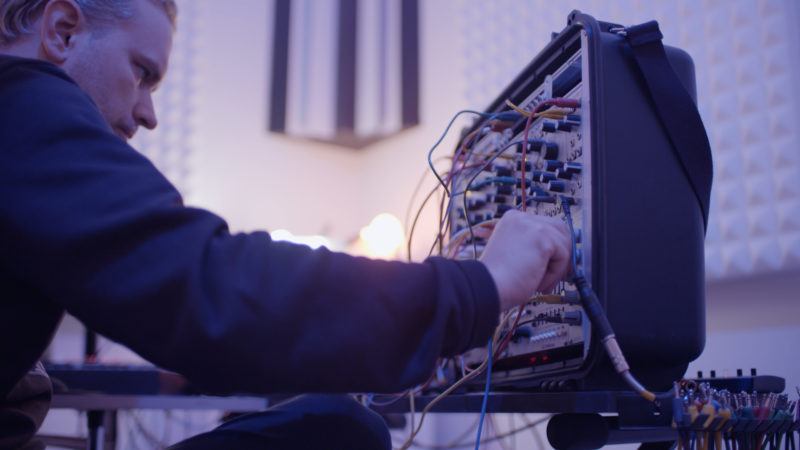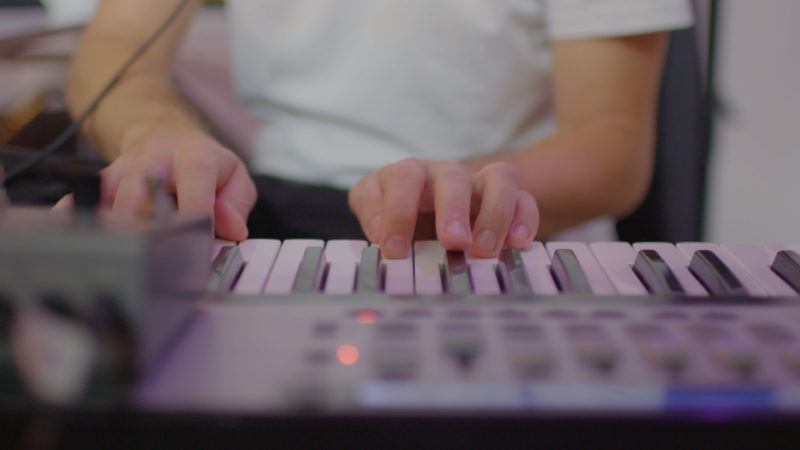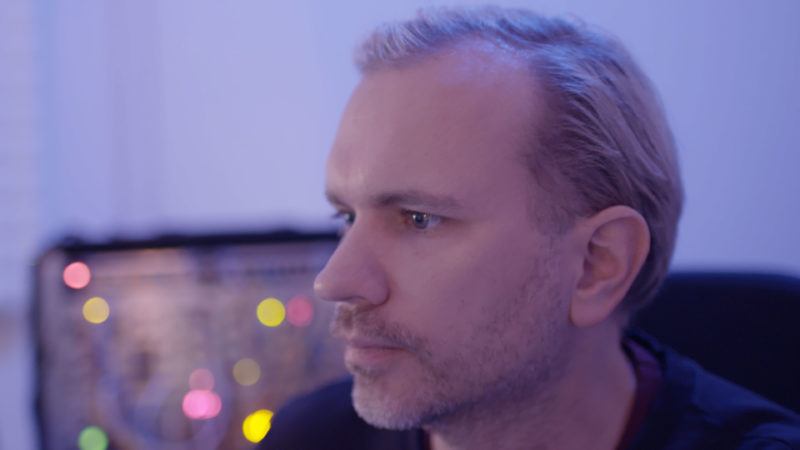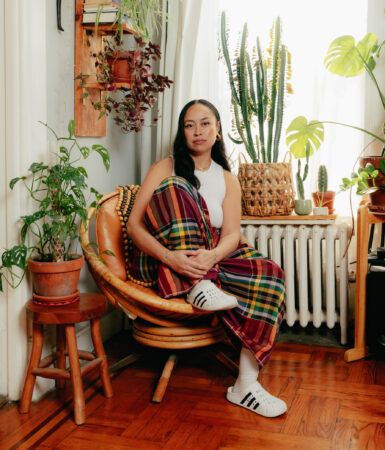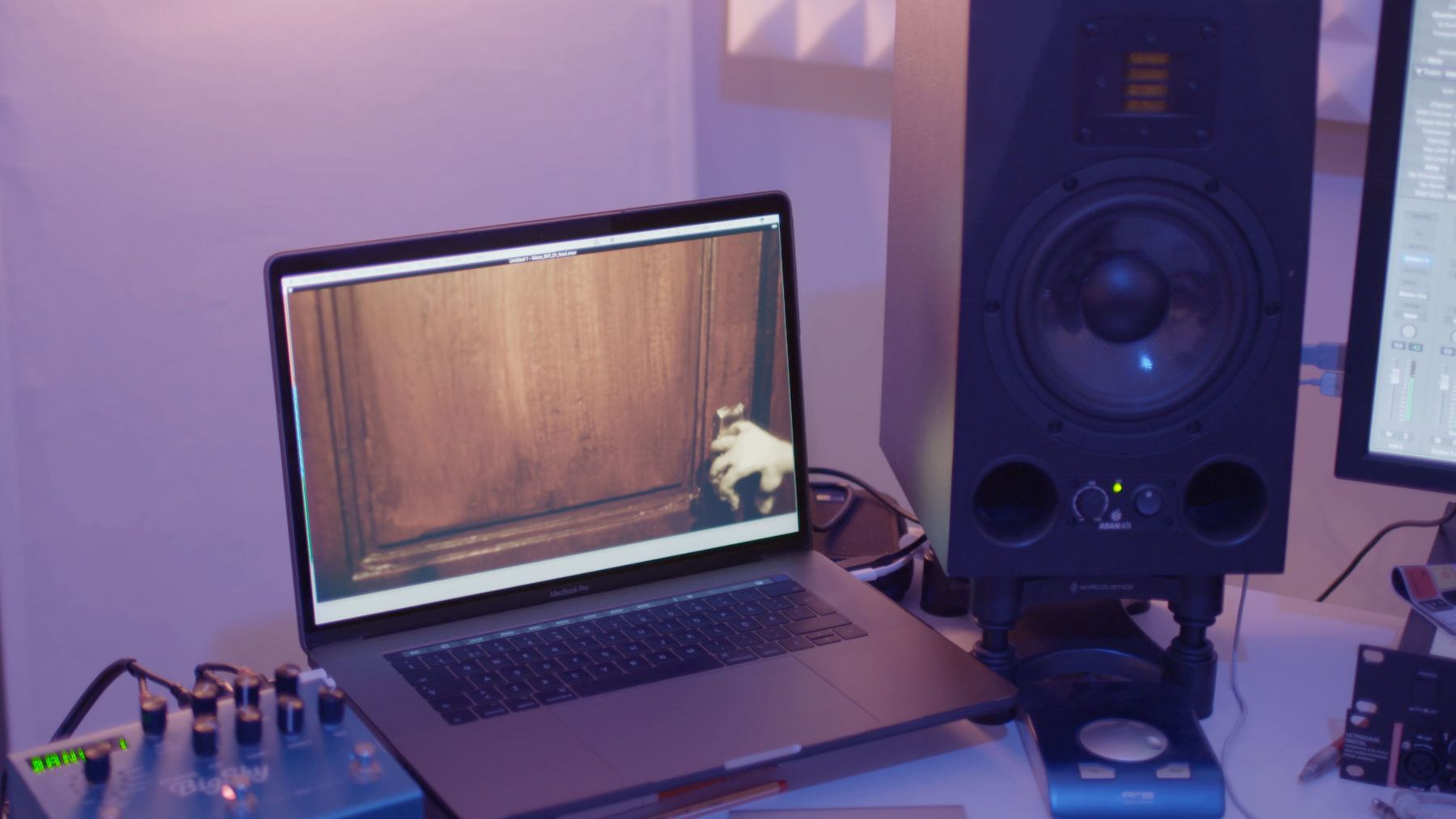
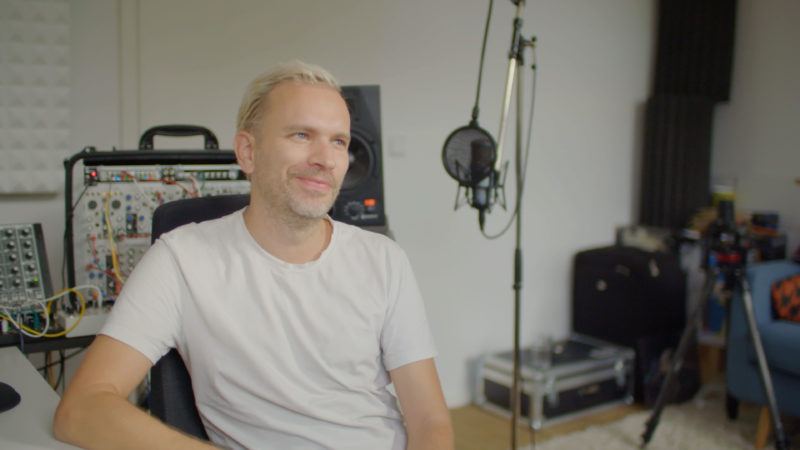
In the Studio
Hans Berg collects digital and analogue sounds to score his film collaborations with Nathalie Djurberg.
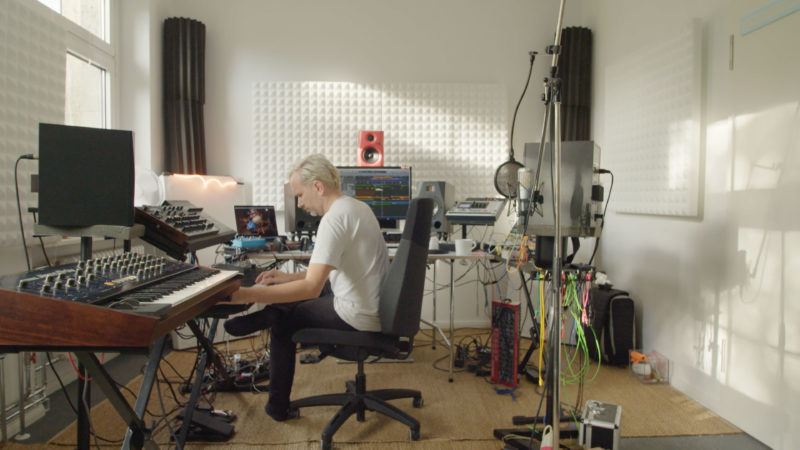
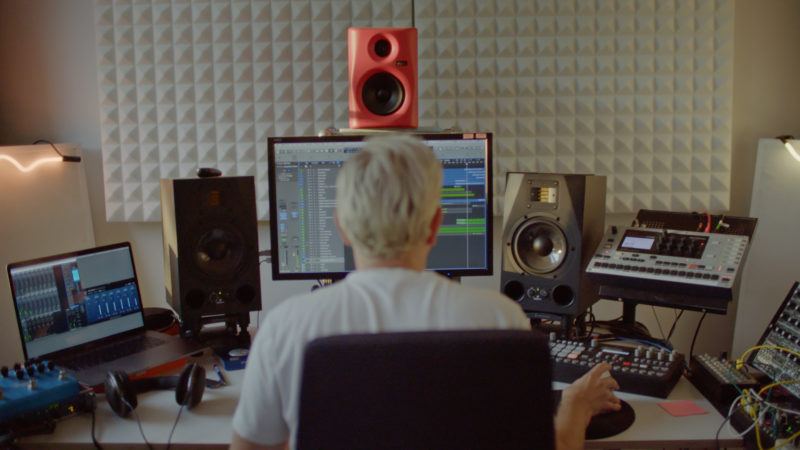
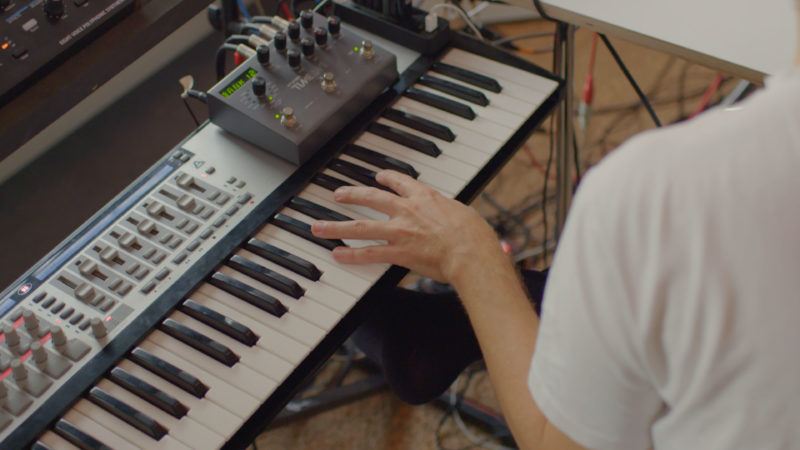

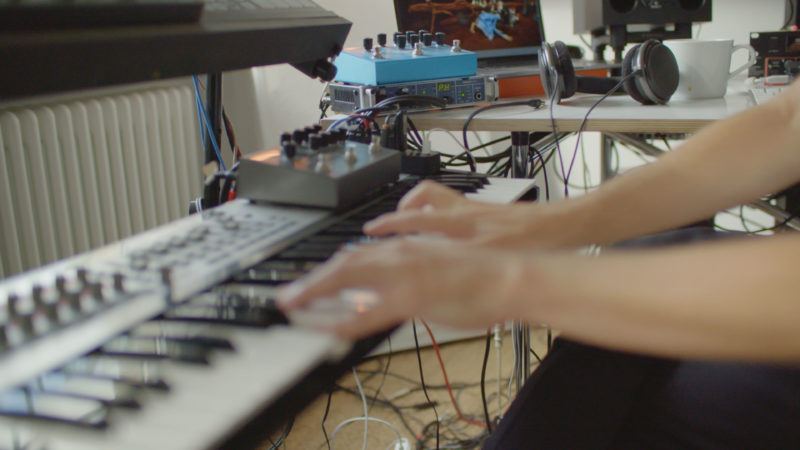
Art21You had a home studio before moving to this space. What’s your take on living and working in the same place?
Hans BergNathalie [Djurberg] and I had the studios at home, but that didn’t work after a while because I couldn’t concentrate. It’s better to be in this room, which I really love. I can’t go and sit on the couch and make coffee every fifteen minutes. I’m much more concentrated here because there’s nothing else to do. It’s just a studio—synths, speakers, and the computer.
What do you use to compose music?
What I need to be able to do anything is the keyboard. Then I have the computer and speakers. I could live with that if I had to. But then you just work with the computer and don’t have anything tactile to work with. That’s why I expand with the different kinds of synthesizers that do very different things.
What kinds of sounds do you look for?
Something organic and not static. It’s always changing. It’s always a little bit out of control.
This modular system—which looks like something from World War II or something—makes really weird electronic sounds. It’s very hard to control and unpredictable, which is very nice.
This drum machine makes really fat drum sounds. Here I have a new synth. Very soft and warm sounds. This is a vintage synth that’s very noisy and has a lot of character. It’s a bit out of tune and brings a nice, warm feeling to the music.
How do you approach creating music for the films?
The music starts when Nathalie starts talking about an idea for a film. Sometimes it’s really vague in the beginning. When she starts making puppets, or starts working with the set and the scenario, I usually get some kind of idea. That sets the vibe for the film.
Then, I open a new project in my music software and start playing different sounds at the same time as I’m watching the film. Collecting all the sounds. I don’t actually write music with pen and paper. I come up with a melody and record it right away, and then I forget how it was played.
I try to match the atmosphere I want. It doesn’t have to correspond to the film. Sometimes I want to go against what’s happening in the film. Sometimes I want to enhance what’s happening.
A sort of dissonance?
Exactly. Like, if you have a really gruesome scene, maybe I want to make some happy music to make people feel a bit uncomfortable—and make me feel uncomfortable when I’m doing it.
What is your background in music?
I don’t have a traditional music education. In the beginning, I was really nervous about making music with classical instruments like harps and flutes because I thought you had to know what you’re doing. But Nathalie taught me not to care about that. Like, why should you care about rules?
Of course, it’s good to have a background in music so you know what you’re doing. But I don’t have it, so that’s it. I can’t change my background. I think it could be also very helpful because you’re not stuck with how things are supposed to be.
If I had a background in music, maybe I wouldn’t do this kind of music because maybe it’s wrong somehow. I like keeping mistakes. I like keeping things that are not completely correct. Nathalie and I have the same history in our work. Nobody taught her animation, she taught herself. She had to come up with a process herself. I did the same with music. We fake it, then we make it.

